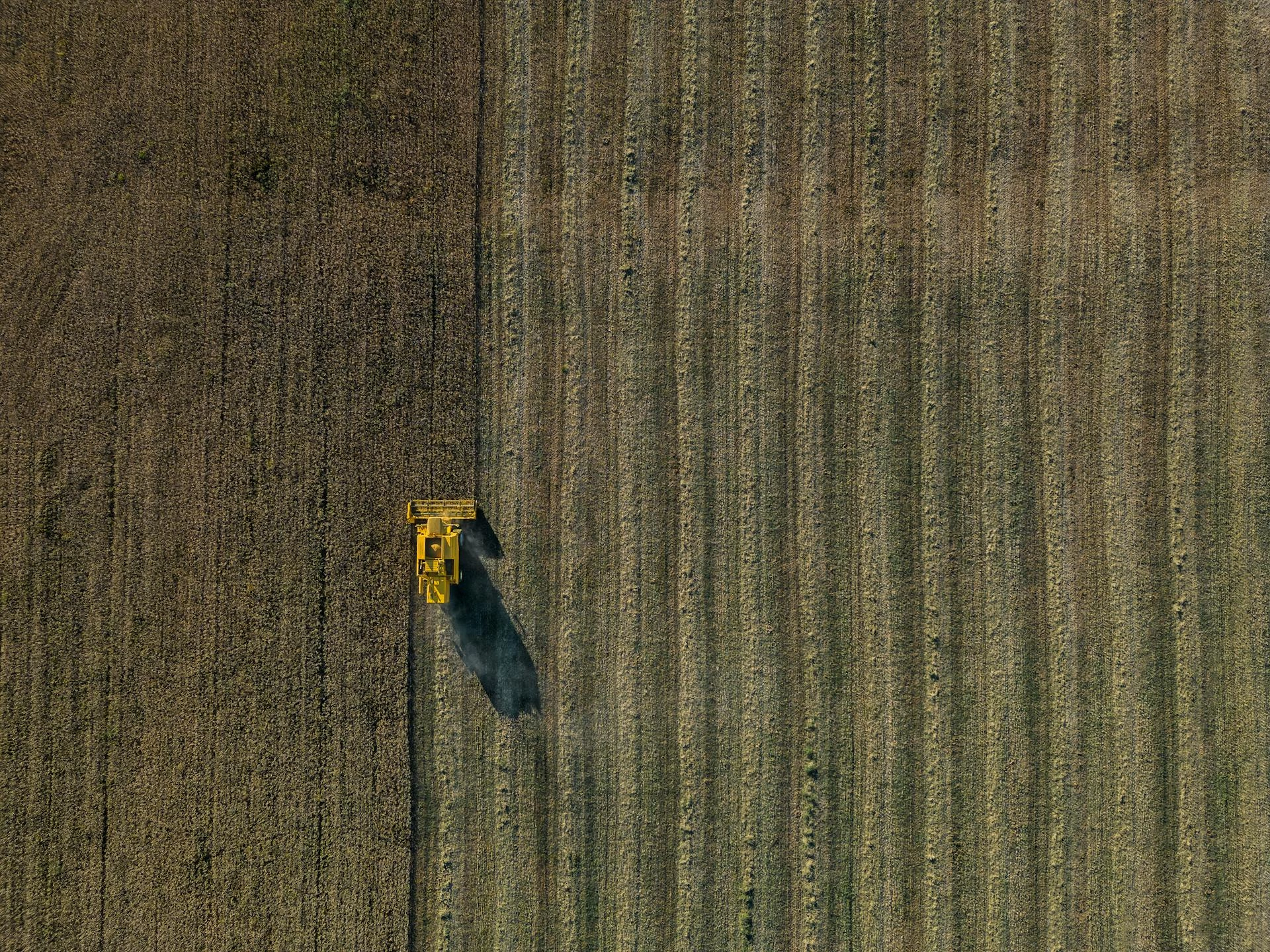Sorry folks: Bigfoot, Nessie, and the Yeti don’t exist

Professor Tim Coulson
- Published
- Opinion & Analysis, Science

Despite centuries of speculation, Bigfoot, the Yeti, and the Loch Ness Monster are scientifically impossible, though aliens are probably ‘out there’, writes our science and environment correspondent, Professor Tim Coulson
Bigfoot, The Yeti, Nessie—three fabled creatures that capture our imagination and make us wonder, will we ever find them? Well, I’m sorry to be ‘that guy’ but, in short, they don’t exist, though there’s a good chance that aliens do.
My job as a biologist has frequently involved analysing data from cameras deployed in the great outdoors to photograph animals that wander past. These devices have a sensor that triggers when movement is detected, which then releases the shutter. Camera traps are deployed in remote places across the globe and provide biologists with large amounts of information on which species are present in an area, how common they are, and when and where they are active. They are eyes into nature, and they are an extremely effective tool in allowing biologists to gain insight into the biodiversity of a region.
One interesting question is how long would an array of camera traps need to be deployed before scientists can say with confidence that a species does not exist? The answer is a little involved and relies on something called ‘species accumulation curves’. The longer that an array of camera traps is put out in the field, the more species that are photographed, but this number tails off, eventually flat-lining when all species that can be photographed have been. The number of traps, and their locations, help determine when the species accumulation curve asymptotes. Of course, we can never say with absolute certainty that we have captured all species. It is possible, although unlikely, that all individuals of very rare species manage to avoid all traps for the entire they are deployed, but confidence levels can rise to over 99% fairly quickly for large animals like chimpanzees and gorillas, particularly when large numbers of cameras are put out. Once the accumulation has reached an asymptote, you can be confident that new species are unlikely to be detected with further effort.
Although hundreds of camera trap studies have been running for many years now in areas where bigfoot and yeti are supposed to live, they have never been captured by camera traps. Instead, purported evidence for these beasts comes from blurry photos or videos taken by people who have supposedly encountered them. Camera trap photos would be better quality, but both species, if they exist, appear to be able to studiously avoid these hidden eyes in the forests and mountains.
Our understanding of biology also makes the existence of bigfoot impossible. It is argued to be a great ape, a group of animals that evolved in Africa, and whose fossils have been found in Africa, Asia, and Europe. The only great ape to make it to the Americas is us – Homo sapiens – and our ancestors didn’t settle North America until about 16,000 years ago. That is but a blink of the eye in terms of evolution, and not long enough for bigfoot to evolve from the first people to cross the Bering Straits into a giant, hairy gorilla-type beast.
The Loch Ness Monster is another cryptid—the word used for beasts when people think they exist but there is no compelling evidence—that regularly makes the news. Those pictures of the monster that do exist, suggest the animal has a long neck and a small head, making it sound like a giant marine reptile called a plesiosaur. These animals died out with the dinosaurs 66 million year ago. Their remains, although not common, appeared quite frequently in the fossil record before the asteroid impact that killed off the dinosaurs but have not been recorded since. For a population to remain viable for 66 million years, there would have been many millions of these animals, living across a wide range, and surely some would have left remains. It is a biological impossibility for a single individual of a long extinct species to live in Loch Ness, and if there were many hundreds, we would surely have caught some in our fishing nets.
I would dearly love for Bigfoot, Yeti, the Loch Ness Monster and other cryptids to exist, but the scientific evidence says otherwise. The likelihood of such beasts living undetected in forests, mountains and lakes, in great numbers, for thousands of years without leaving a single skeleton, fossil, bone fragment or skin sample is hard enough to swallow.
But when we also consider the biological and evolutionary factors that determine these species’ purported existence and long-term survival, the likelihood reduces to the point where it becomes so tiny as to be confidently discounted as pure fantasy and fun figments of our imagination.
There is, however, a good possibility that aliens exist. The universe is absolutely vast, and we have only explored a very tiny fragment of it. Unlike the forests where Bigfoot is supposed to live, or the mountainous home of the Yeti, we have only explored a miniscule corner of the places where aliens may be found.
Whether we ever find alien life, however, is another matter entirely. Marconi’s first radio signal was broadcast about 120 years. If an intelligent alien was listening out for radio waves from another civilisation, and heard them then immediately replied, their home planet would have to be within 60 light years of Earth. There are about 3,000 stars within 60 light years of Earth. That might sound like a lot, but it’s not.
There are estimated to be 100 billion stars in our galaxy, and maybe as many as 400 billion. The Milky Way is one of at least 200 billion galaxies, and perhaps as many as two trillion, in the bit of the universe we can see: the observable universe. We have consequently only explored a very, very tiny fraction of a fraction of a percent of the volume of the universe. We have hardly started exploring. We have also only been listening out for alien life for a century or so, yet the universe is 13.8 billion years old. If civilisations only last for a few hundred or few thousand years, the chances of two intelligent species building civilisations at the same time that are cosmically close to one another is vanishingly small.
The other challenge is that we cannot travel anywhere near the speed of light, which is the speed that radio waves traverse the universe. And given our current understanding of physics, it is impossible for anything with mass to do so. The fastest object humanity has created is a space probe, and even that would take thousands of years to reach even the closest star. Unless science discovers a way to instantaneously jump from one part of the universe to another through worm holes, we are very unlikely to ever explore much of our galaxy, let alone the universe. Because we have only explored a fraction of even our local neighbourhood, it is much too early to rule out the existence of aliens, be they simple bacteria-like organisms or little green beasts with long necks and oversized heads.
The problem we have at the moment is we don’t know how to explore more of our universe quickly and easily. If that problem faces all intelligent species, we may never encounter aliens, even if they are quite comment across the vast tracts of the cosmos.
Perhaps it is no wonder some people continue to search for cryptids closer to home, even if the search is almost certainly futile. There are, of course, new species of animals discovered all the time, but they tend to be small— insects and the odd bird or rodent.
The absence of skeletal remains and any credible photos are strong and reliable indicators that Nessie, Bigfoot and the Yeti don’t exist. Add to that the conflict between their purported existence and our understanding of biological science and it becomes a virtual scientific impossibility that they are out there waiting for us to find them. I apologise to all cryptozoologists for placing this big and very final nail into cryptids’ coffins but it’s time to find another hobby. I think it would be sensible for us to put our efforts into discovering and characterising biodiversity that does exist, rather than holding out hope of finding a population of plesiosaur or another intelligent great ape.

Professor Tim Coulson is a biologist at the University of Oxford, where he has led both the Zoology and Biology departments. He previously headed Population Biology at Imperial College London and held positions at Cambridge University and the Institute of Zoology London. A highly decorated scientist with awards from major institutions including the Royal Society, he has edited leading journals and served on Government advisory boards. His first book for general readers, “A Universal History of Us” (Penguin Michael Joseph), traces the 13.8-billion-year story from the Big Bang to human consciousness and is available to buy on Amazon.
Sign up to The European Newsletter
RECENT ARTICLES
-
 UK and South Korea finalise upgraded free trade agreement
UK and South Korea finalise upgraded free trade agreement -
 Trump lawsuit against BBC raises questions over legal pressure on European public broadcasters
Trump lawsuit against BBC raises questions over legal pressure on European public broadcasters -
 UK government sets up Women in Tech taskforce amid gender imbalance concerns
UK government sets up Women in Tech taskforce amid gender imbalance concerns -
 Mycelium breakthrough shows there’s mush-room to grow in greener manufacturing
Mycelium breakthrough shows there’s mush-room to grow in greener manufacturing -
 Marriott strengthens South African portfolio with new Autograph Collection hotel in Cape Town
Marriott strengthens South African portfolio with new Autograph Collection hotel in Cape Town -
 Oxford to host new annual youth climate summit on UN World Environment Day
Oxford to host new annual youth climate summit on UN World Environment Day -
 Countdown to Davos 2026 as Switzerland gears up for the most heated talks in years
Countdown to Davos 2026 as Switzerland gears up for the most heated talks in years -
 Paribu buys CoinMENA in USD 240m deal as regional crypto markets consolidate
Paribu buys CoinMENA in USD 240m deal as regional crypto markets consolidate -
 AI innovation linked to a shrinking share of income for European workers
AI innovation linked to a shrinking share of income for European workers -
 African airspace overhaul set to shorten flight times for European travellers
African airspace overhaul set to shorten flight times for European travellers -
 Exclusive: Global United Nations delegates meet in London as GEDU sets out new cross-network sustainability plan
Exclusive: Global United Nations delegates meet in London as GEDU sets out new cross-network sustainability plan -
 Fast fashion brands ‘greenwash’ shoppers with guilt-easing claims, study warns
Fast fashion brands ‘greenwash’ shoppers with guilt-easing claims, study warns -
 Europe’s shrinking middle class is turning to the radical right, new study suggests
Europe’s shrinking middle class is turning to the radical right, new study suggests -
 Private sector set to overtake government as main driver of corporate sustainability in 2026, report suggests
Private sector set to overtake government as main driver of corporate sustainability in 2026, report suggests -
 Europe emphasises AI governance as North America moves faster towards autonomy, Digitate research shows
Europe emphasises AI governance as North America moves faster towards autonomy, Digitate research shows -
 JPMorgan plans multibillion-pound tower in Canary Wharf
JPMorgan plans multibillion-pound tower in Canary Wharf -
 Strong workplace relationships linked to higher initiative among staff, study finds
Strong workplace relationships linked to higher initiative among staff, study finds -
 Brexit still hitting poorest hardest as food costs rise and mental health worsens
Brexit still hitting poorest hardest as food costs rise and mental health worsens -
 Global crises reshape household food habits, major review finds
Global crises reshape household food habits, major review finds -
 Sir Trevor McDonald honoured at UWI London Benefit Dinner celebrating Caribbean achievement
Sir Trevor McDonald honoured at UWI London Benefit Dinner celebrating Caribbean achievement -
 Adelphi Masterfil acquires Karmelle to bolster UK machinery manufacturing
Adelphi Masterfil acquires Karmelle to bolster UK machinery manufacturing -
 Cost-of-living pressures push London staff to seek practical perks
Cost-of-living pressures push London staff to seek practical perks -
 AI and scent-science firm Arctech expands into agriculture with Rothamsted base
AI and scent-science firm Arctech expands into agriculture with Rothamsted base -
 Malta PM says future growth hinges on stronger higher-education system
Malta PM says future growth hinges on stronger higher-education system -
 Golden visa surge sets the stage for InvestPro Greece 2025
Golden visa surge sets the stage for InvestPro Greece 2025



























